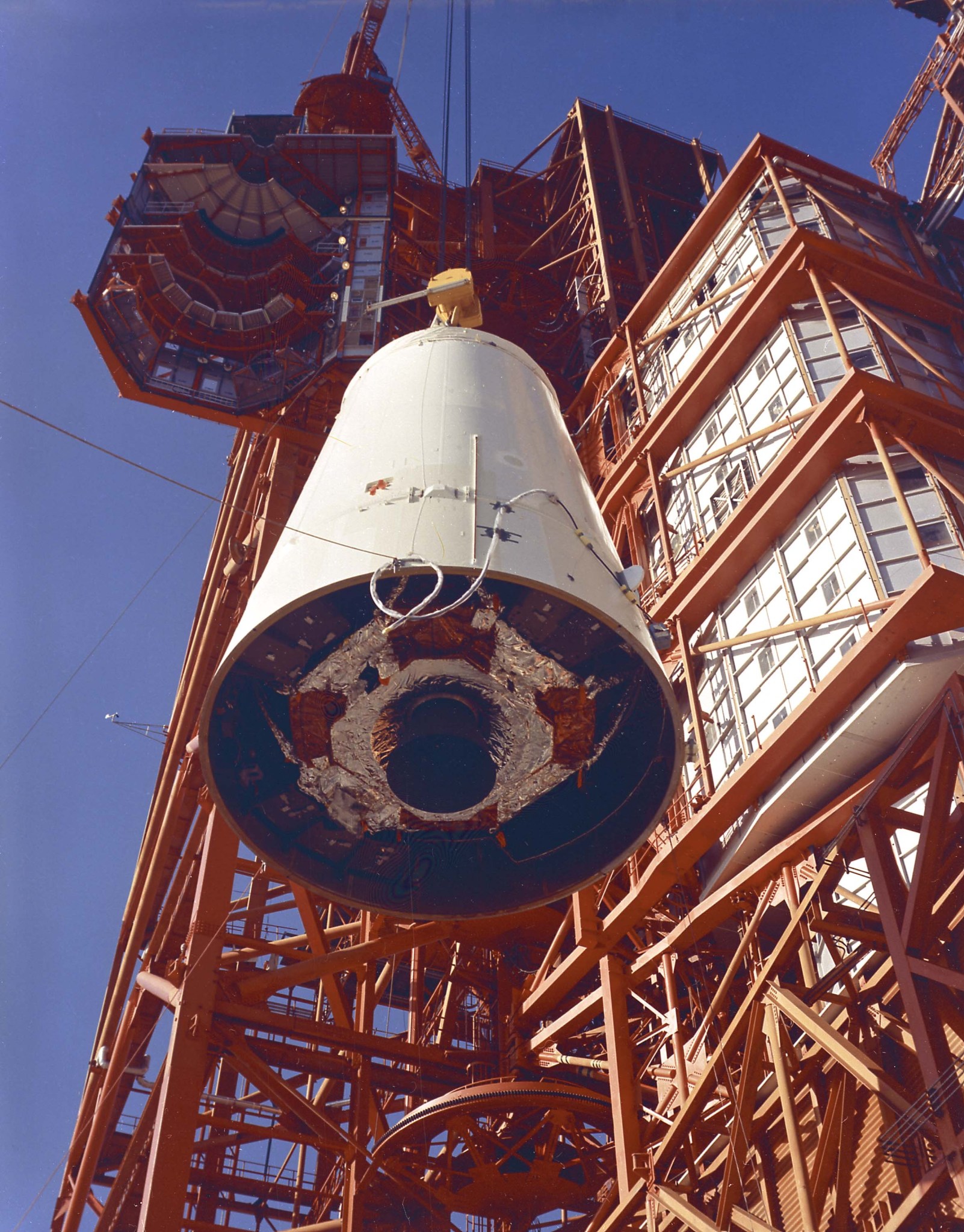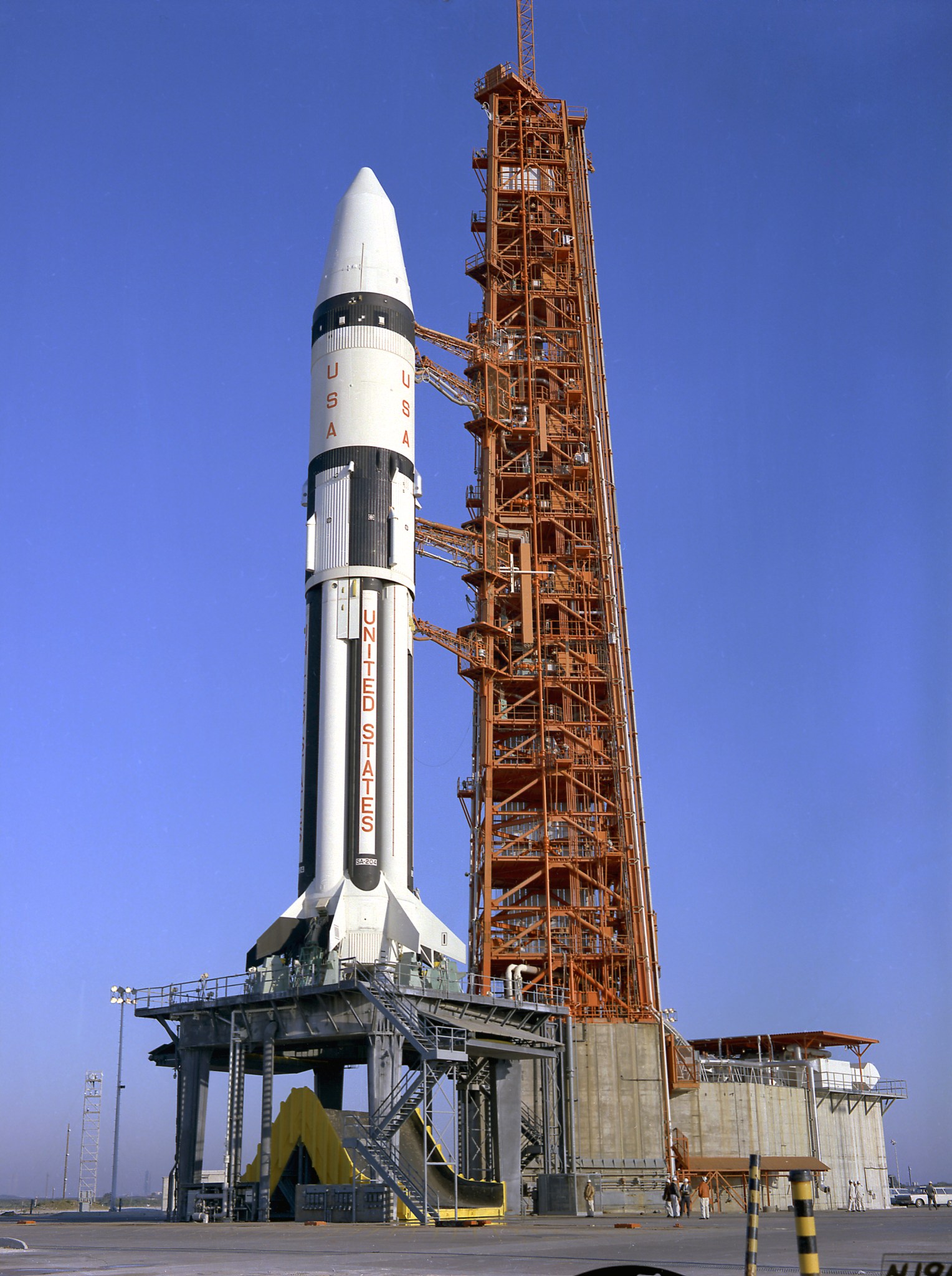The Apollo Lunar Module (LM), designed to take two astronauts down to the lunar surface and then return them to the waiting Command Module in lunar orbit, faced its first test in Earth orbit during the Apollo 5 mission. The Grumman Corporation in Bethpage, NY, the prime contractor for the LM, faced formidable challenges to build the first space vehicle to take humans to the Moon. Foremost among these was making the vehicle light enough for its booster rockets yet sturdy enough to handle the stresses of launch from Earth and landing on the Moon, while keeping the astronauts inside safe.
The first flight unit, designated LM-1, arrived at Kennedy Space Center in Florida on June 27, 1967. As a weight-saving measure, and because it was not planned to land anywhere, this spacecraft didn’t carry any landing legs. Engineers spent several months checking out the vehicle, integrating it into the Spacecraft LM Adapter, and then transporting it out to Launch Pad 37B. There, on November 19, workers stacked it on top of Saturn 1B AS-204, the same rocket that would have carried Apollo 1 into space the previous February. Undamaged by the fire, the rocket was destacked from Pad 34 in March and restacked on Pad 37B in April, awaiting the arrival of LM-1.
Readiness reviews in December would give the final approval for the Apollo 5 mission. The test flight, planned for January 1968, was to simulate the steps of a lunar landing mission, including firing both descent and ascent stages, the latter in the “fire-in-the-hole” mode, meaning igniting its engine while still attached to the descent stage to simulate a lunar landing abort. At the end of the mission, both stages would burn up in the Earth’s atmosphere. A successful test flight would take NASA one step closer to a Moon landing before the end of the decade.
For more on the Apollo Program, please visit the JSC History Office page at https://www.jsc.nasa.gov/history/apollo.htm






























